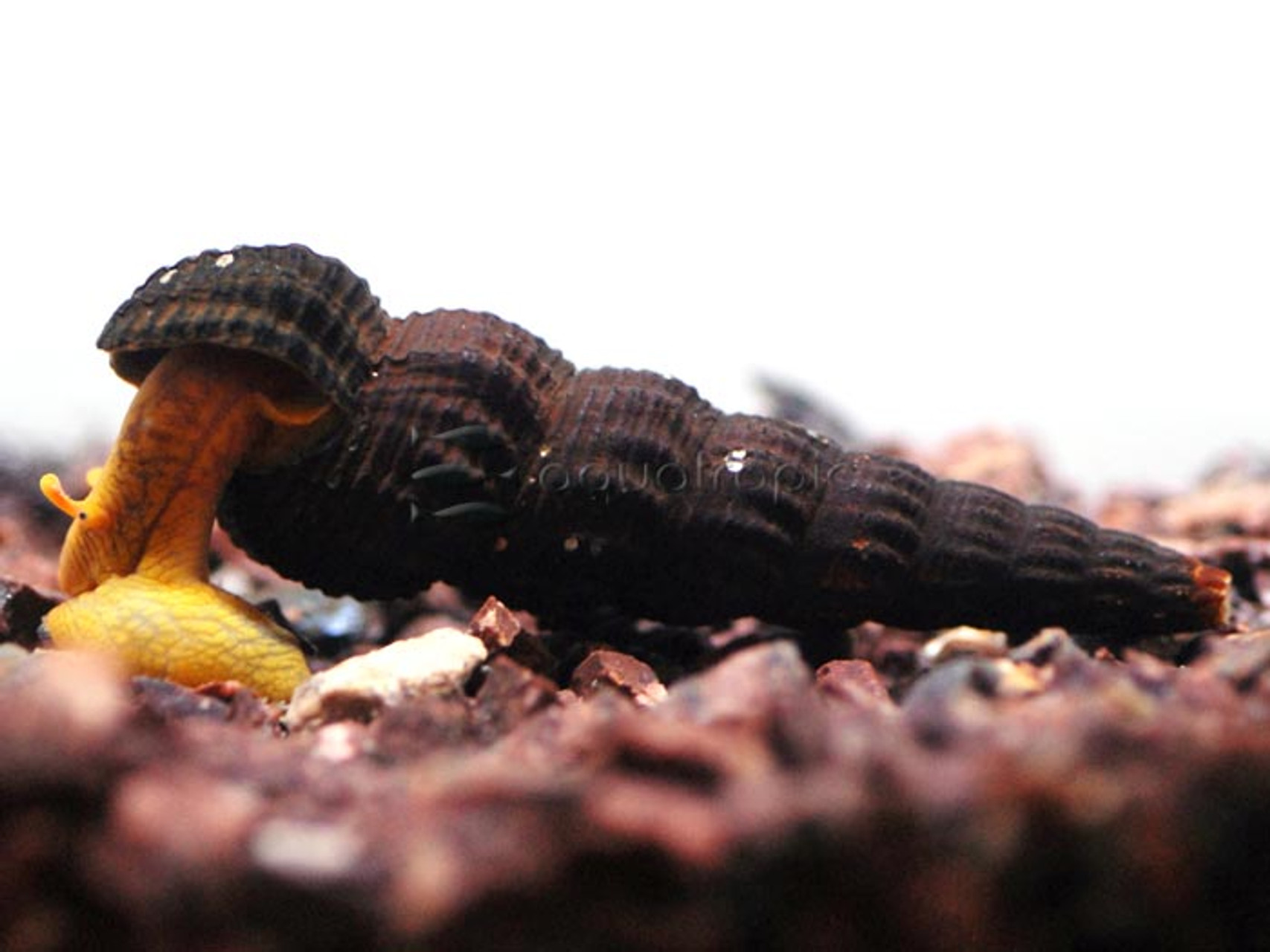Orange Volcano Rabbitsnail (Tylomelania sp.)

Tylomelania snails have made a recent splash in the freshwater aquarium world thanks to their large size and heartiness in captivity. You’ll often see these referred to as Rabbitsnails, owing to the large pair of antennae (which look a bit like the large ears of a rabbit) and their jerky way of moving about, almost as if they are hopping around.
There are now dozens of Tylomelania known, with many species likely awaiting scientific description. The bright orange Volcano Snail is one of the larger and more colorful examples, and, like most members of this genus, it comes from the lakes of Sulawesi, reportedly Lake Poso.
Fully grown specimens can get to over four inches in length, and, like a small molluscan cow, these charming creatures need a steady supply of food… more than you might think. Tylomelania are not the type of snail to mow down the green film growing on an aquarium; instead, they need a steady source of flake and pellet foods, frozen foods, and freshy leafy greens and vegetables. Aquarists report that live plants are generally on the menu, even relatively unpalatable foliage like Java Fern, so care must be taken if housing this snail around greenery.
The sexes are separate in this genus but indistinguishable externally. Reproduction is common in captivity, provided there is at least one fertilized female present. The young are produced one at a time and brooded internally. When their development is complete, the female extrudes the egg in a process that takes roughly five minutes, producing a small white capsule (similar in appearance to a tic tac) from which the juvenile emerges soon after. If well-fed, females can produce offspring at a rate of about one per month.
The waters of Sulawesi are warm, consistently around 80℉, and somewhat alkaline, and these conditions should be replicated as closely as possible in an aquarium. Acidic waters will ultimately dissolve their shell over time, so a bit of calcium carbonate added to the substrate or filter media is called for as a buffer. Tylomelania often dig themselves into the bottom, so sand is arguably a better base than gravel, though this is probably of minor importance. Some species are said to be found preferentially on rocks in the wild, while others are associated with soft silts, but little is known definitively about the origins of this unidentified orange species.